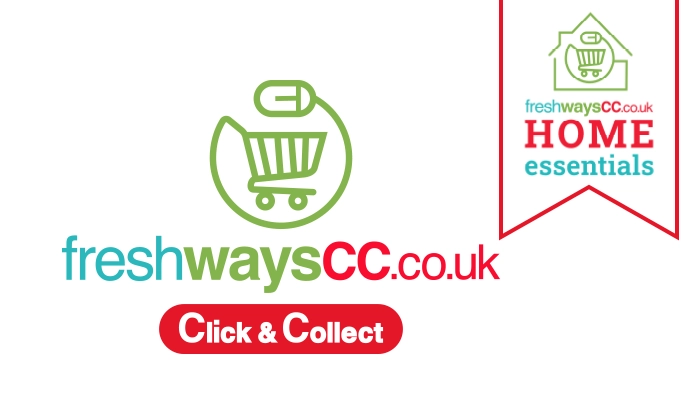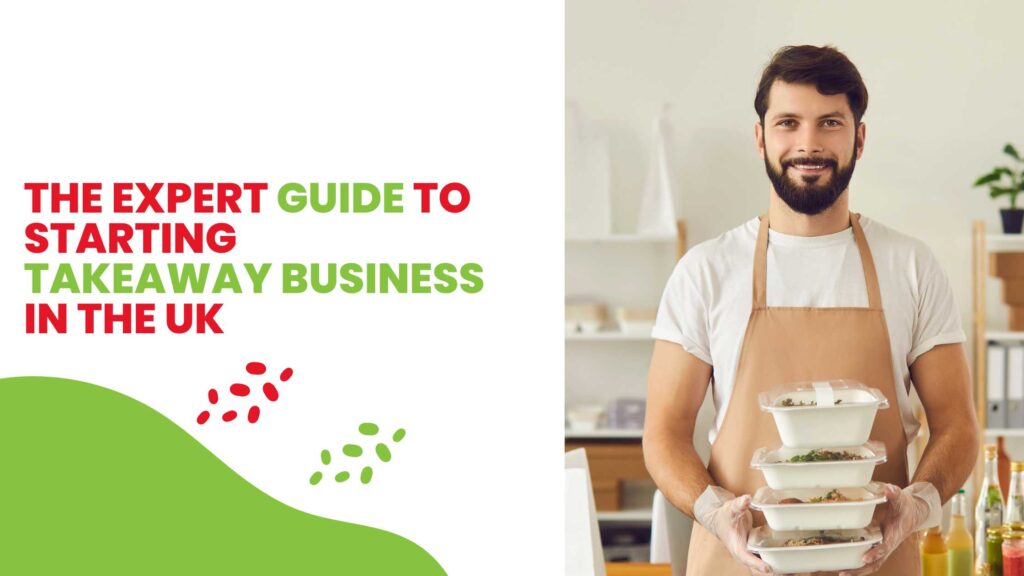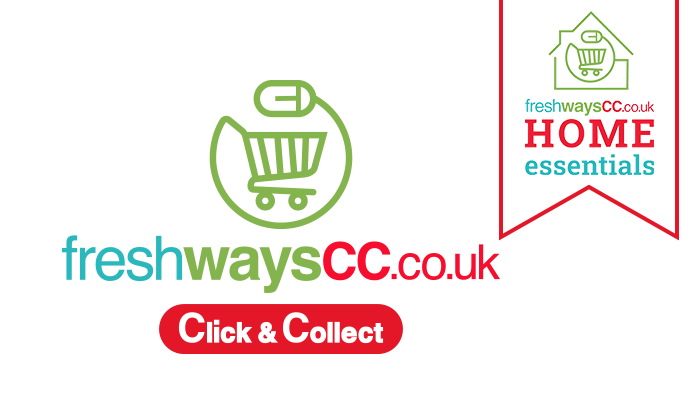Fast food takeaways are becoming more and more popular, as people continue to want an alternative to traditional fast food options. They offer a quick, convenient way to get your hands on some tasty food that’s not just centered around burgers, fries, and other palatable nuggets.
A takeaway food business is a fun, exciting, and easy way to start your own business without having to deal with any formalities like owning property or hiring employees.
In this post, we will give you all the information you need to know as a beginner in starting and opening a takeaway business in the UK.
How Much Does it Cost to Start a Takeaway?
The cost of starting your takeaway restaurant depends on where you’re located in the UK. If you live in a city or large town, then it will probably cost more than if you are starting in the countryside.
The price of opening up a takeaway restaurant will vary from region to region, depending on what kind of building is available and how much work needs to be done on it before it can be opened up for business.
Expect to pay anywhere between £5,000 to £100,000 (the latter if you’re operating in a particularly popular city, such as London).
How to Start a Takeaway Business from Home in UK?

If you have a strong desire to be your boss, then opening a takeaway business could be the right decision for you.
A takeaway business from home UK can be a great way to make some extra cash, and it’s surprisingly easy to do. Here’s how:
Things You’ll Need to Get Started a Takeaway Restaurant in the UK
The takeaway industry is worth billions of pounds in the United Kingdom and there are numerous takeaway chains that have proven to be extremely successful.

Starting a takeaway is a big step but with proper guidance, you can succeed. If you’re thinking about starting a takeaway restaurant in the UK, there are lots of things that you’ll need to get started. Here are some of them:
1. Do Your Homework
First and foremost, you’ll need to create a business plan. A business plan is a detailed plan that describes the whole process of a new business. It includes all the activities, costs, and time frames involved in starting up and running your new business.
You’ll need to decide whether or not you want to start a franchise or franchise-like model for your takeaway business. If so, then you’ll need to consider whether your market is large enough for a franchise or if it’s best suited for another type of model.
You’ll also need to consider the type of food that is most popular at this time. If people like fried chicken but not chicken wings, it may be wise to come after they’ve tried their first fried chicken meal!
Finally, if possible, find out who owns any other restaurants in your area so that they can endorse your brand and bring more customers into their establishment through word-of-mouth advertising.
2. Company Registration for Takeaway Business in the UK
When you’re thinking about opening up a takeaway restaurant, you’ll first need to register your business with the government. This is done through the company registration service. The registration process can take anywhere from a few weeks to months, depending on how busy your business is and whether or not you have any previous convictions or other red flags on your record.
Once registered, you will receive a company number and be assigned a unique tax identification number for your new business.
3. Takeaway Business Licenses and Permits
Next, you’ll need to get licenses and permits from local authorities to run a takeaway restaurant in the UK. In most cases, this will cost around £300 per year for business licenses and permits for staff members who work at the restaurant.
However, some councils may charge more than this amount when they approve an application for a new license or permit; this is something you should check with your local council before applying for one of these licenses or permits.
4. Starting Your Search for a Location
Not all locations are created equal, so it is important to find the right spot for your business. While there are plenty of options for locations and types of takeaways in the UK, you should consider how accessible the location will be for your customers. Is there a good parking lot? Are there any other businesses on the same block or in the same area as you? If not, then it might be easier if you open up shop somewhere else.
You should also make sure that your space has the right equipment and kitchen supplies, and that it has enough space to accommodate customers. This will help you attract customers who are looking for a quick bite on their way home from work or school, as well as those looking for an authentic taste of British.
5. Funding Your Business
To start a takeaway restaurant in the UK, you’ll need to have access to some capital. You can get this through loans and grants, but it will usually be easier to find these sources of funding if you already have a business or property to sell.
If you’re starting a new business, consider working with a bank that specializes in helping small businesses getting loans. They can help you find the best rates and terms for your circumstances, and they’ll also be able to offer advice on how to grow your business going forward.
6. Creating a Marketing Strategy for Takeaways
Another important step for any successful business is creating a marketing strategy that includes all of the different channels through which potential customers might discover your brand. This includes social media channels like Facebook and Twitter as well as traditional advertising platforms like TV ads and radio spots.
7. Find Reliable Takeaway suppliers
You should also consider finding reliable takeaway supplier for the supplies such as meat, vegetables, and other ingredients used in your business. If these items aren’t readily available in your local area, it’s possible that they will be ordered from a supplier somewhere else.
You’ll also want to make sure that your supplier provides high-quality ingredients that are free from additives, preservatives, and other chemicals that can affect the taste of your food.
When choosing a supplier, it’s best to ask questions about what they do when they deliver the products to your restaurant and how they store them.
8. Hiring Staff for Your Takeaway
In addition to a kitchen and cooking equipment, you’ll need to hire staff for your takeaway restaurant. To start, you can hire a manager and a chef who will be responsible for running the day-to-day operations.
You may also want to consider hiring one or two waitstaff members so that customers can have their orders taken while they wait or pick up food orders made by customers waiting in line.
When hiring staff for your takeaway restaurant, look for people with experience in customer service, who have strong communication skills and can deal with customers effectively.
9. How to Register for VAT?
To start a takeaway restaurant in the UK, you need to register with HM Revenue and Customs (HMRC) and then apply for the necessary permits.
VAT registration is straightforward. You can do this online or by calling HMRC (Monday to Friday, 8 am to 6 pm). This is free of charge.
10. Insurance Cover for Takeaway Businesses in the UK
Here is some important information about insurance coverage for takeaway businesses in the UK.
The first thing to think about is whether you need any kind of insurance at all. You may think it’s not necessary, but there are many reasons why having some sort of cover is essential. For example:
Final Words
Opening a takeaway business presents an exciting opportunity but also comes with its fair share of responsibilities and requirements. The key to success lies in determining the kind of food you want to provide, identifying your target audience and potential competitors, and setting the right strategy for your business.
As you prepare to open your business, make sure you take into account local council regulations and planning permission. Also bear in mind that although big chains like McDonald’s may be growing in popularity it still pays to offer something different and unique to your customers. Quality ingredients are important when it comes to certain cuisines, so do your homework before making any decisions. Once you have run your food shop you can start thinking about franchising as an expansion option.
The takeaway business is a popular one. In the case of locally sourced meals, you’ll want to make sure that you are fully aware of legislation and hygiene requirements before opening your business. Don’t forget to check and double-check your licensing requirements as well before opening. If you’re strong with planning, strategy, and organization then there’s no reason you can’t find success in the takeaway business.
Also Read: How Retailers Can Take Benefits of Click and Collect Service in 2022










